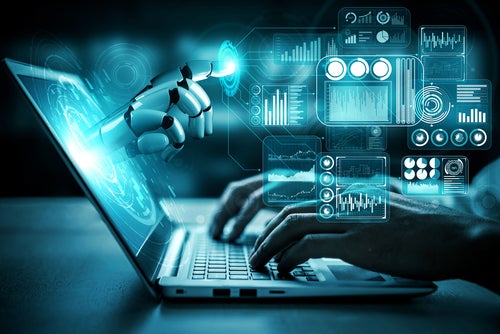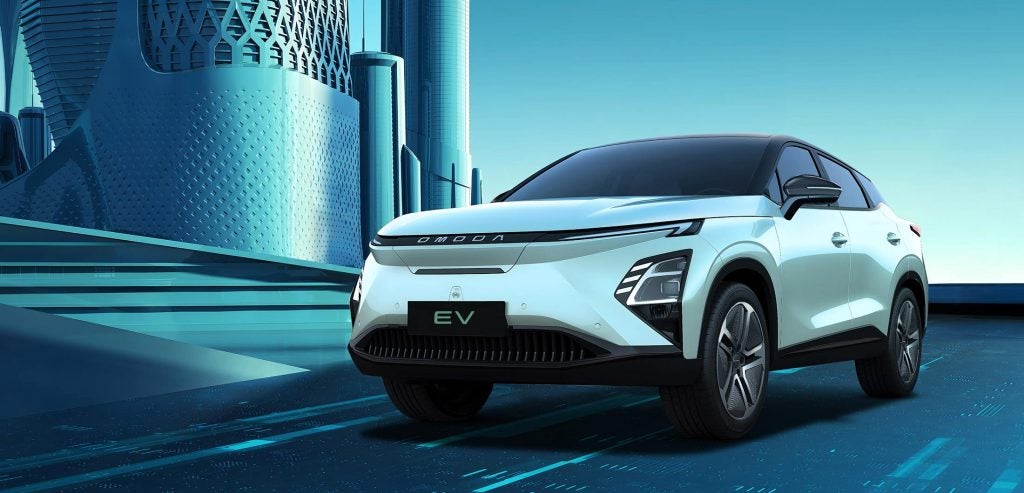

Could you tell us a little about Monolith and how its technology helps carmakers?
Monolith empowers engineers to use AI to solve their most intractable physics problems. We do this by enabling engineers to use their existing data from the current product development process.
Using their existing data, they can build self-learning models to instantly predict results for challenges that would otherwise have to be solved using extensive, time-intensive physical testing. These self-learning models learn from existing data and identify patterns to solve challenges that until now, have been beyond the scope of what the human engineer or simulation technology can do. Instead of doing costly, time-intensive tests to address this uncertainty, engineers can work with the Monolith platform to quickly understand and predict performance without having to programme the models or do any coding.
And because Monolith was built specifically for domain experts rather than statisticians or expert coders, our no-code interface allows engineers to leverage their expertise to solve very complex problems that capitalise on the wealth of data that already exists and removes dependencies on other teams who are less familiar with the data or problem.
What previously impossible R&D challenges can AI now help solve?
See Also:
As an engineer, you may have been tasked with building a model and then using that model to virtually design the perfect product with the hope that the physics-based simulation approach will do its job. But what I’ve found is that if you want to radically accelerate the speed of developing a new product, you need a radically different solution to understand the physics challenges that are still not fully understood.
How well do you really know your competitors?
Access the most comprehensive Company Profiles on the market, powered by GlobalData. Save hours of research. Gain competitive edge.

Thank you!
Your download email will arrive shortly
Not ready to buy yet? Download a free sample
We are confident about the unique quality of our Company Profiles. However, we want you to make the most beneficial decision for your business, so we offer a free sample that you can download by submitting the below form
By GlobalDataOne of our customers in the industrial space is doing just this. Engineers at Honeywell previously used Computational Fluid Dynamics (CFD) simulations to understand the complexity of gas fluid dynamics in the development of their smart gas metre, but the simulations weren’t 100% accurate, leaving a critical gap in understanding between simulation and reality. Using Monolith, the engineers are employing statistical machine learning methods to close the gap, allowing them to instantly and accurately understand the impact of varying temperature conditions and types of gases across all operating conditions, including extreme and unsteady parameters. As a result, the Honeywell engineering team is building superior products on substantially shorter timescales.
The ideal use case for AI is when engineers are trying to understand the physics of complex systems that can’t be fully represented by simulation and therefore require substantial physical testing to calibrate. When faced with intractable physics problems, they can use Monolith to immediately leverage their existing data and instantly solve the previously unsolvable and in doing so, get back literally weeks or months of their time.
Could you give us some specific examples of how OEMs are using AI in the R&D process?
By training Monolith self-learning models with the company’s test data, BMW engineers use AI to solve previously intractable physics challenges and predict the performance of highly complex systems.
We began working with the BMW Group crash test engineering team in 2019 to see if AI could predict crash performance and, importantly, do it substantially earlier in the vehicle development process. BMW engineers built self-learning models using the wealth of their existing crash data and were able to accurately predict the force on the human tibia for a range of different crash types without doing physical crashes.
In future, the accuracy of the self-learning models will continue to improve as more data becomes available and the platform is further embedded into BMW’s engineering workflow. This means engineers can optimise crash performance earlier in the design process and reduce dependence on time-intensive, costly testing whilst making historical data infinitely more valuable.
Should AI be seen as a threat to engineers and potentially their jobs?
Quite the opposite. In fact, one of our customers recently referred to Monolith as Augmented Intelligence because it magnifies his team’s engineering expertise. It is an ideal tool for time-poor engineers who are, quite frankly, under immense pressure to develop the next generation of vehicles.
It’s not about replacing a human being; it’s about supplementing and augmenting their activities, and that’s really where OEMs are seeing the value of AI.
With Monolith, one automotive customer reported a 70% reduction in track-testing time, plus up to a 50% reduction in overall costs. This is just one example of how efficiencies gained through AI free up time to be spent fine-tuning even better products. As a Honda executive said about our technology: “It almost gives us superpowers.”
Do you see any emerging trends in which AI could help?
No matter what new technology is introduced, be it autonomous, connected or electric, engineers will always need to create a fundamentally great car to stay competitive and drive demand – from premium acoustics and greater fuel efficiency to safety and vehicle dynamics.
AI technology can radically transform vehicle development by empowering engineers to extract the best possible insights and predict results from existing engineering data, and much earlier in the development process. This allows engineers to arrive at design and engineering decisions quicker and more efficiently, giving them time to explore even more design parameters and operating conditions.
Ultimately this means OEMs can bring better vehicles to market faster which isn’t just vital to reach our collective EV ambitions but allows engineers to do what they love best – engineering incredible products.
We are hearing that while manufacturers remain excited about automated driving, the challenge will require more time and effort to fully realize. What’s your view on the path towards autonomous driving?
That’s right. Last year, AV companies Waymo and Cruise cumulatively drove 3.2 million miles in a bid to robustly train and test their autonomous tech. Engineering teams are hardly afforded this time anymore – competitors are moving too quickly – and yet the complexity of vehicle development has never been higher.
When engineers struggle to understand the intractable physics of complex vehicle systems, self-learning models can complement solving the underlying physics with AI-based statistical predictions. Autonomous technology is the perfect example of where a lot of data has been created to understand a complex system.
OEMs can use AI to take existing engineering data from simulations or physical tests to build self-learning models that instantly predict further test results or unearth new insights buried within the data.
Do you expect to see a bigger role for simulation and AI as part of the training, validation and testing of AVs?
Yes, yet we understand that introducing new tools into an age-old product development process requires vision, courage and experimentation. That experimentation is made much easier when engineers understand that AI isn’t a complete replacement for simulations and physical tests – rather, it’s the vital piece of the puzzle to enable engineers to reach design convergence much more quickly and efficiently.
Veteran engineers will have experienced a similar transition when simulations were first introduced to the workflow. This eventually meant they didn’t have to go back to first principles with every design change.
Introducing AI to modern vehicle development is a similar step change – suddenly engineers don’t have to solve the physics underpinning a mathematical system but can now instantly access the insights already hidden in their existing engineering data.
What’s next for Monolith?
The world’s top engineering teams from Rolls Royce to Honda and Siemens are using Monolith to cut product development while creating even higher quality products. In the automotive space specifically, engineering teams are bringing Monolith into more and more engineering functions that generate vast amounts of data, from crash testing to aerodynamics, motorsports, and, as mentioned, ADAS.
We’re poised to swiftly scale, propelled by the globally renowned engineering teams at major OEMs who are adopting our technology and extensive portfolio of IP.






